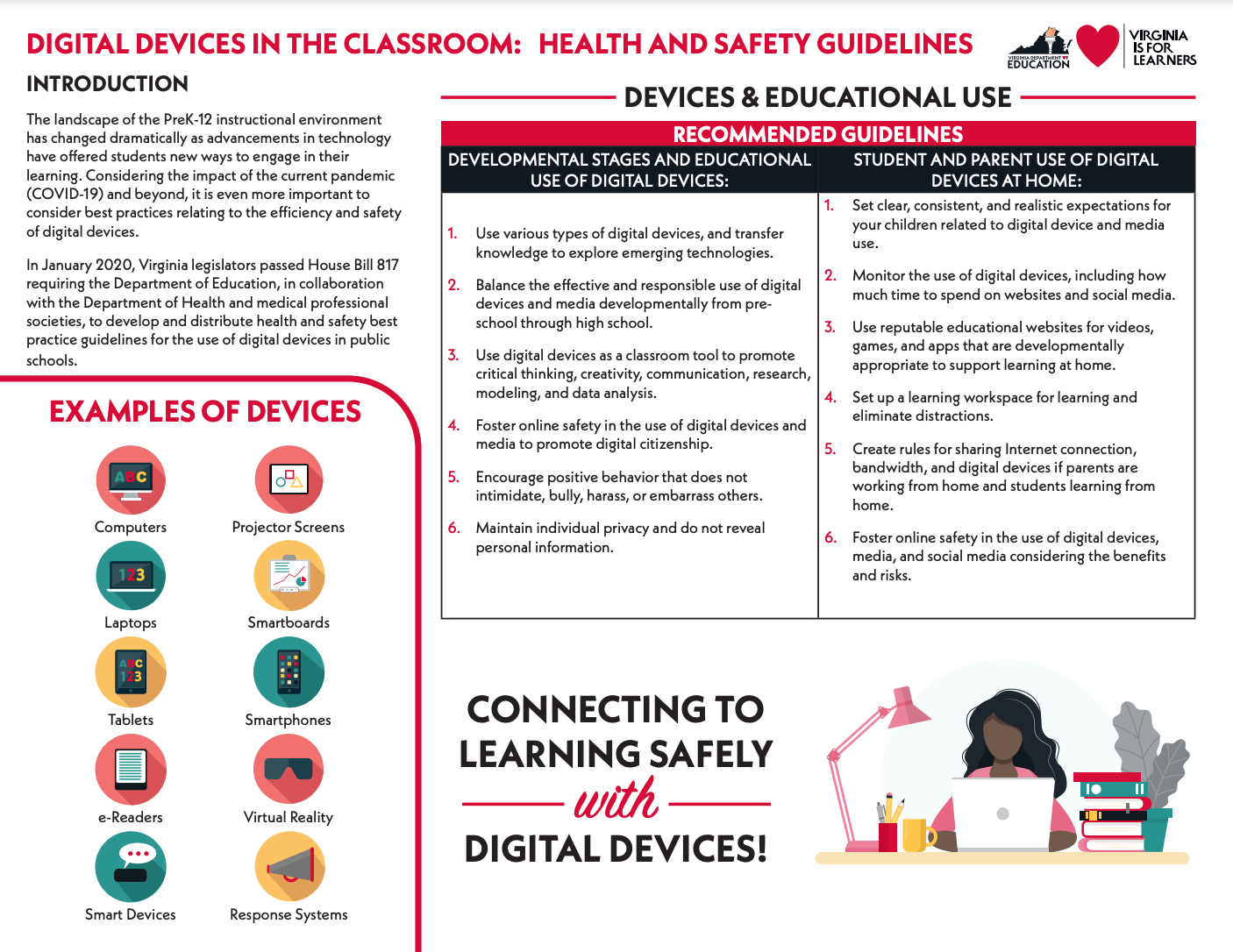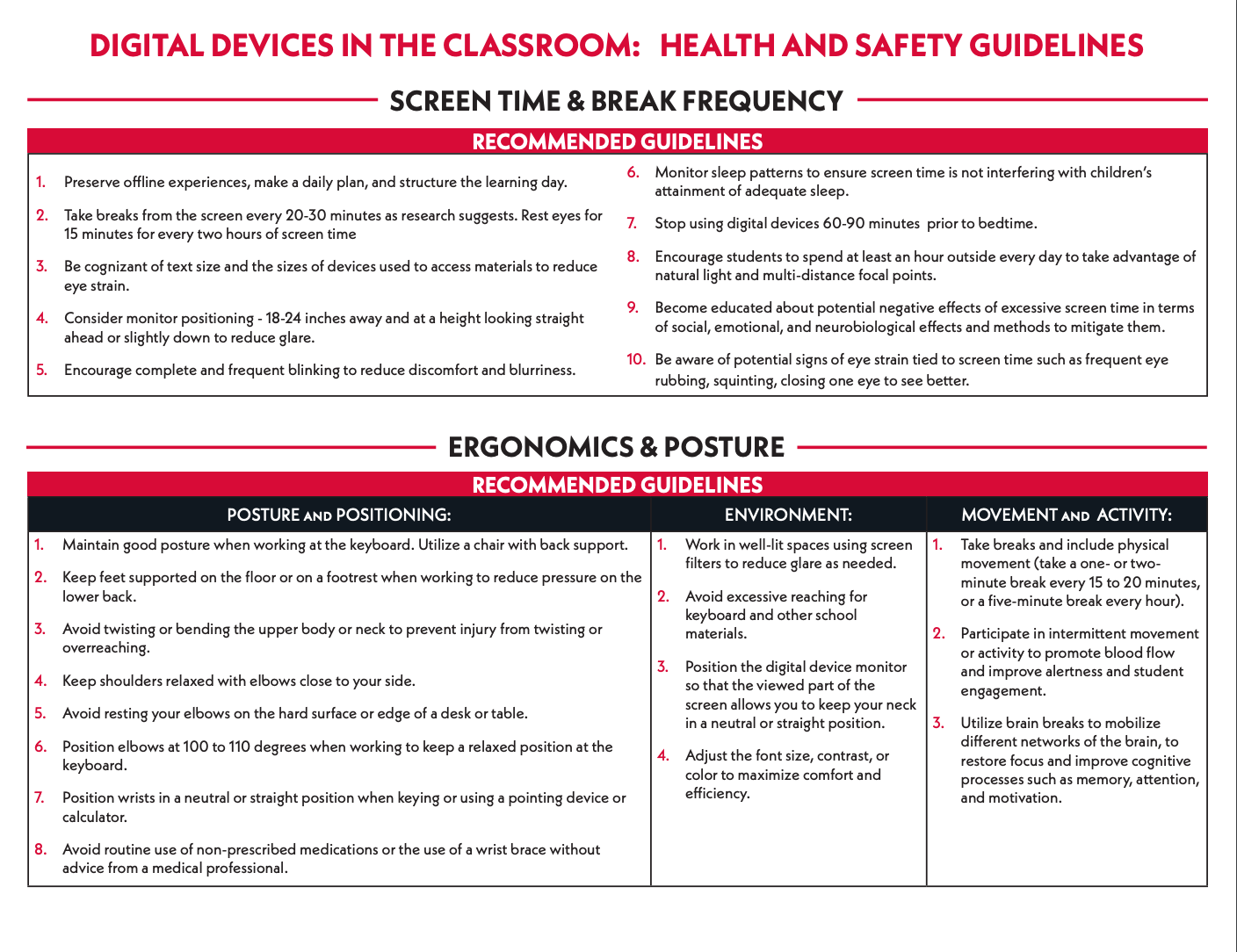In June 2021, the Virginia Department of Education in conjunction with the Virginia Department of Health released their Digital Devices in the Classroom, Health and Safety Guidelines. These guidelines completely omitted the most harmful part of using a wireless digital device: radio freqency radiation (RFR).
Our kids are the most vulnerable to the negative impacts of RFR from wireless technology and now that many schools across Virginia are using digital devices for both in-classroom and at home learning, children are set to be exposed to RFR longer and more often than ever before.
Kids are more vulnerable to the harms of radio frequency radiation (and all these wireless devices in the classrooms), concerns about cell phone towers on school property, and the reason the Virginia Department of Education (VDOE) and the Virginia Department of Health (VDH) need to change their Digital Devices in the Classroom, Health and Safety Guidelines ASAP.
These current VDOE/VDH "health and safety" guidelines as they stand, these guidelines are missing a lot of basic information regarding LED and radiation that actually protect our children. We need the VDOE and VDH in order to actually protect our children in school (and at home!).
See more on the VDOE/VDH Digital Device Guidelines below:
From https://www.doe.virginia.gov/instruction/virtual_learning/:
In January 2020, Virginia legislators passed House Bill 817![]() requiring the Department of Education (VDOE), in collaboration with the Department of Health and medical professional societies, to develop health and safety guidelines related to the use of digital devices in the classroom. The VDOE convened a Digital Devices in the Classroom Workgroup to develop guidelines.
requiring the Department of Education (VDOE), in collaboration with the Department of Health and medical professional societies, to develop health and safety guidelines related to the use of digital devices in the classroom. The VDOE convened a Digital Devices in the Classroom Workgroup to develop guidelines.
The Digital Devices in the Classroom: Health and Safety Guidelines document (Word) address digital device use for different age ranges and developmental levels, the amount of time spent on digital devices in the classroom and for homework, appropriate break frequency from the use of digital devices, physical positioning of digital devices in the classroom, and recommended training to ensure best practices.
The Digital Devices in the Classroom: Health and Safety Guidelines infographic (PDF) includes three major focus areas to help support teaching and learning within these online models and include recommended training for school personnel.
- Devices and use of in the PreK-12 classroom
- Screen time, frequency and breaks
- Ergonomics and posture
HB 817 (passed April 6, 2020, effective June 2021) States: That the Department of Education, in collaboration with the Department of Health and medical professional societies, shall develop and distribute for use by local school boards health and safety best practice guidelines for the effective integration of digital devices in public schools no later than the 2021–2022 school year. The guidelines shall be based on peer-reviewed, independently funded studies and shall at a minimum address digital device use for different age ranges and developmental levels, the amount of time spent on digital devices in the classroom, appropriate break frequency from the use of digital devices, physical positioning of digital devices in the classroom, the use of digital devices for homework, and recommended teacher training to ensure best practice implementation.
Click the images below to download the infographic.


